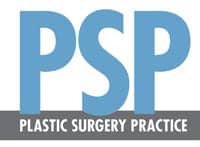
The times, they are a-changing. Your patient preferences are changing. The ways your patients get information are changing. Media channels are changing, as well.
And there is more change ahead.
Change is not to be feared. It is to be welcomed and even embraced. It can be good or bad. It all depends on how you react to it. It can be a bad thing if you pretend all is well and you continue to do what you’ve always done. However, do a reality check and be prepared to make changes, going forward into 2012.
When you’re prepared, with eyes wide open, you can adapt, grow, and flourish.
GO WITH THE FLOW
Rather than fight the change, go with it. Open up to the possibilities and the new opportunities available to you.
By the way, huge fortunes can be made during changing times, and you can rise to the front of the pack by moving forward while others, frozen in place with fear or uncertainty, do nothing.
How do I see the world of aesthetics shifting in 2012, given what I know about the psychology of the aesthetic patient, marketing and advertising strategies, as well as trends within the aesthetic industry?
SUPPLY AND DEMAND FOR AESTHETICS
- Demand for aesthetics continues to grow. The 76 million Baby Boomers in the US have the needs and money to fix all sorts of things: aging face and hands, sagging body parts, and so on. It is also important to note they’ll inherit $13 trillion, all of which is disposable income. This past year, $10 billion was spent on aesthetic procedures, and that should continue to enjoy at least single-digit growth.
- Although the mass market continues to hold back on high-end surgical procedures due to the cost and downtime, the popularity of less-invasive procedures has increased.
- The demand is still strong, but the supply is much stronger. Competition will continue to increase for aesthetic services. The number of aesthetic physicians bailing on bureaucratic insurance medicine and going after cash-based medicine will continue to grow, so aesthetic patients will have more choices than ever. These people will also be more confused than ever with all the options and available information.
- This increase in supply will drive prices down, because new physicians just now entering the marketplace typically promote low prices to bring in business. In turn, other physicians will feel compelled to drop their prices, bringing down the entire industry. That means there will be more commoditization of injectables and laser procedures; surgical procedures will follow.
THE PATIENT PERSPECTIVE

- Today’s aesthetic patient is looking more often at less expensive, less downtime procedures. Even if they don’t get as good a result as they would with surgery, it still behooves you to give them what they want.
- Today’s patient is in the driver’s seat and knows it. They have many choices. They are acting more like price-conscious consumers than patients. It would be smart to remind them how much skill and expertise go into aesthetic medicine.
- Your training and experience is your “logical differentiator.” How well you treat your patients and build relationships with them is your emotional differentiator.
- Patients are also shopping for convenience. For example, they want to stay closer to home and not have to drive far for their appointments, especially for their smaller injectable and laser procedures. The pearl here is to cater to your surrounding community first before you spend time and money reaching further.
- Patients want to get in and out without waiting, and they want their time respected because they are busy people. It’s more important than ever to respect your patients’ time.
- Service will be more heavily linked to price and is a determinant to help patients analyze costs and benefits. Offering limo service, at-home nurse care, and house calls for convenience will help differentiate from price alone. Patients will pay more and refer more when treated with exceptional service.
- Patients want customized procedures specific to their needs versus the “one size fits all.” Treat each patient as unique because they believe they are.
YOUR PRACTICE, STAFF, AND PROCESSES
- Much more aggressive and comprehensive “plugging the holes” in your processes bucket will bring you more profits. Success will be in the details.
- Perfect your processes. Not losing patients is just as important as attracting new ones.
- The critical importance of the patient having a “wow experience” cannot be underestimated. They must all have a great experience with you every time, on the telephone or in person.
- Increased nurturing of prospective patient is warranted, in order to encourage them to return and refer. This creates more value and gives you the “razor’s edge” over your competitors.
- Never-ending staff improvement is high up on the list, too. They must be focused and dedicated every day while on the job.
- Hiring the right people and paying them so they stay and perform is an investment in your practice and not overhead. You can no longer afford to keep training new folks who aren’t serious about this industry or about patient relations.
- Offer creative patient financing. If you are catering to the “I want it but I can’t afford it” group, do not respond by lowering your prices. Offer creative prepay, layaway, and multipay plans to keep your patients loyal to you while they pay incrementally for their pending surgery or other high-ticket procedures.
PATIENT ATTRACTION STRATEGIES
- Quality of patients will be more important than the sheer quantity. As Pareto’s Law says, “80% of your profits will come from 20% of your patients.” It would be smart to know who they are and cater to them.
- There will be more emphasis on holding onto existing patients versus constantly attracting new patients.
- There’s a huge difference between episodic income events, such as surgery and high-ticket procedures, versus the lifetime value of a patient who stays loyal to you.
- The willingness to invest much more in patient acquisition and retention than in new patients will show in better results on your bottom line.
- Relationships that build loyalty and referrals with your patients is what builds an aesthetic practice today.
- Word-of-mouth referrals are everything, and much more effort should go into automatic systems to encourage patient referrals.
- More creative pricing strategies to maximize profits and cater to the top 5% of patients. They will give you even more than the top 20% if they are simply asked and offered premier service.
- Make business alliances with non-competing practices. The goal is to get referrals. You will be introduced as the aesthetic expert, which gives you instant credibility and is a fast, cheap, and effective way to attract new patients.
- Invoke many small-scale patient-attraction strategies: direct mail, e-mail, community work, public relations, events, etc. Do not limit yourself to just one strategy to attract new patients.
- Direct-mail marketing programs are making a big comeback. It can give you the kind of one-on-one face time with patients that you can’t get with mass advertising efforts.
- Patients are more skeptical than ever. An increased amount of evidence of good patient results will be needed. For example, patient stories, before-and-after photos, video testimonials, and online reviews. Automatic systems to capture every kind word every said about you will help fight against the increased commoditization of plastic surgery in our society.
- Send differing messages to small groups in your database—such as Realtors, teachers, stay-at-home moms, professional women with children, professional older women with no children, suddenly single younger and older, etc.
- Groupon and other deals-of-the-day promotions are not advised. These coupon-based programs attract the mass market of price-shoppers but will not help build a value-based practice for long-term success.
- Increased emphasis should be placed on marketing to the affluent patient who is worth 10 times more than the Groupon-type customer.
- Providing increased face time with your patients like the goose that lays golden eggs—it is all about nurturing that ongoing relationship. That will act as a strong differentiator.
- Unique signature procedures and private-label retail products help to differentiate you from the competition.
- External promotions that use mass advertising channels and name-recognition advertising are no longer effective in most markets.
- Increase your involvement in community causes about which you sincerely care. You will get found out organically by your presence (much more effective than paid advertising efforts).
- Mass advertising will be directed to online venues such as niche Internet radio and TV programs. These much smaller markets will appeal to very targeted demographics, including your own clientele profiles. It will be worth investing in this kind of marketing.
OTHER INTERNET MARKETING
- Web-based marketing will continue to be a challenge. One reason is that Google’s search engine rules keep changing. New Web sites pop up every day, so there is a huge hurdle getting found on the Internet.
- Local appeal is more important than national appeal. Google now concentrates on local search engine listings, which will be good for your practice. Your search engine optimization efforts will need to be adjusted to take all this into account.
- Google and other search engines care a lot about in-bound links, so you’ll need to spend more time and effort getting other reputable and related Web sites to link to your site (for example, medical associations to which you belong and sites such as Realself.com, where consumers go to learn more about aesthetic procedures).
SOCIAL NETWORKING
- Increase your practice’s social media activities. Patients want to find you versus you finding them.
- Prior to meeting you, prospective clients will usually research you online to read what patients have said about you in online reviews. Be sure you monitor what is being said about you in online discussion forums.
- Mobile marketing—patients are more connected than ever, so be wherever they are. Your Web-based outreach can just as easily appear on a cell phone, an iPad, a laptop, even a TV set. Make certain your Web site can be read on the devices and technology platforms used by your demographic.
- Video marketing is “personality marketing” and highly recommended. Your biggest differentiator in the world is your personality. No one else is like you, so use that to your advantage.
CONCLUSION
The coming year will be more about survival of the fittest than ever before. Think quality over quantity. The details that go into every aspect of your practice, staff, and processes are what will help you compete more effectively during these changing times. Good luck to you!
Catherine Maley, MBA, is an aesthetic marketing strategist and author of Your Aesthetic Practice/What Your Patients Are Saying. She can be reached at www.cosmeticimagemarketing.com or (877) 339-8833.





